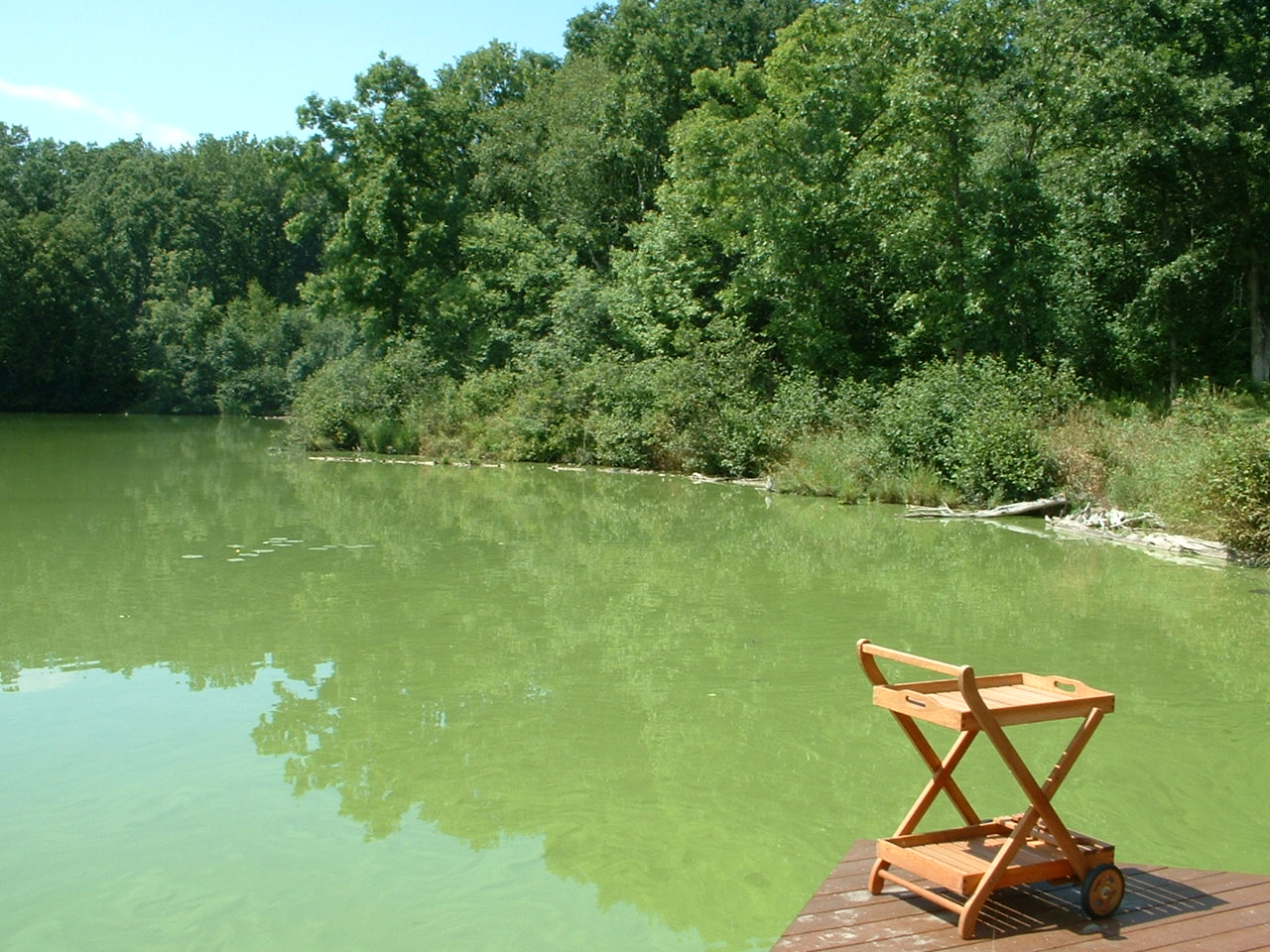

Ecological Importance
Planktonic algae (Anabaena, Aphanizomenon, Chlamydomonas, Closterium, and many other varieties) are the foundation of the aquatic food chain in all ponds, lakes and rivers. The density and diversity of the planktonic algae community in a water body determines how many and what size of fish can be supported. Algal abundance is determined by water fertility with higher levels of phosphorus and nitrogen resulting in increased abundance.
Problems
When plankton algae blooms - more commonly known as blue-green algae, scum and water blooms - approach nuisance levels you'll know it! The water will change to a blue-green or green color giving it a paint-like scum appearance. Microscopic growth is often visible as a greenish ting suspended in the upper few feet of water and occurs Severe blooms may resemble pea soup and actually thicken the water. Many species of algae are involved in algae blooms and these species change over time based on temperature, light, nutrients, and other factors.
In rare instances, nuisance pre-dawn oxygen levels can be reduced to lethal levels for aquatic animal life when a planktonic algae bloom is underway.
Hints to Identify
Look for a change in water color; severe blooms often resemble pea soup; blue-green algae form unsightly, jellylike masses or a blue, paint-like scum on beaches and shorelines.
Caution
When some species of blue-green algae are decaying, their cells release toxic materials, which can poison animals that drink the water. These toxic blooms are uncommon, but it is wise to keep your pets and livestock away from the water when any algal bloom is breaking up.
Preventive measures such as limiting the flow of nutrients into the lake may reduce future blue-green algae blooms. You can get temporary control of existing algae blooms using an algaecide. For more information about blue green algae visit the Wisconsin Department of Health website (Exit Site).
|
Homeowner Treatment Options
|
| Cutrine Plus® Liquid |
| Earthtec |
| SeClear |
| *Aquatic Biologists recommends implementing preventative management techniques and physical removal prior to, or in conjunction with treatment. |
Common Application Questions
Q. When is the best time to treat?
A. Treat when early signs of algae appear if possible. You can generally use lower label dose rates when algae mass is less.
Q. How do I actually apply the product(s)?
A. You can easily apply liquid algaecides and herbicides with a handheld pump-up or backpack sprayer, as evenly as possible, over the treatment area. Contact as much surface algae mats as possible. Subsurface algae will be controlled as product (s) moves throughout the water column. Granular products can also be applied by hand scoop or hand spreader.
Q. How often do I need to treat?
A. Several total or spot treatments may be required to maintain control for the season. Good results should be anticipated.
Q. How long before I see results?
A. Some algae types will succumb within a few days others may take up to twelve days. Heavy growth may require a follow up (about a week later) treatment. Treating before dense matting occurs will be more cost effective yielding longer terms results.
